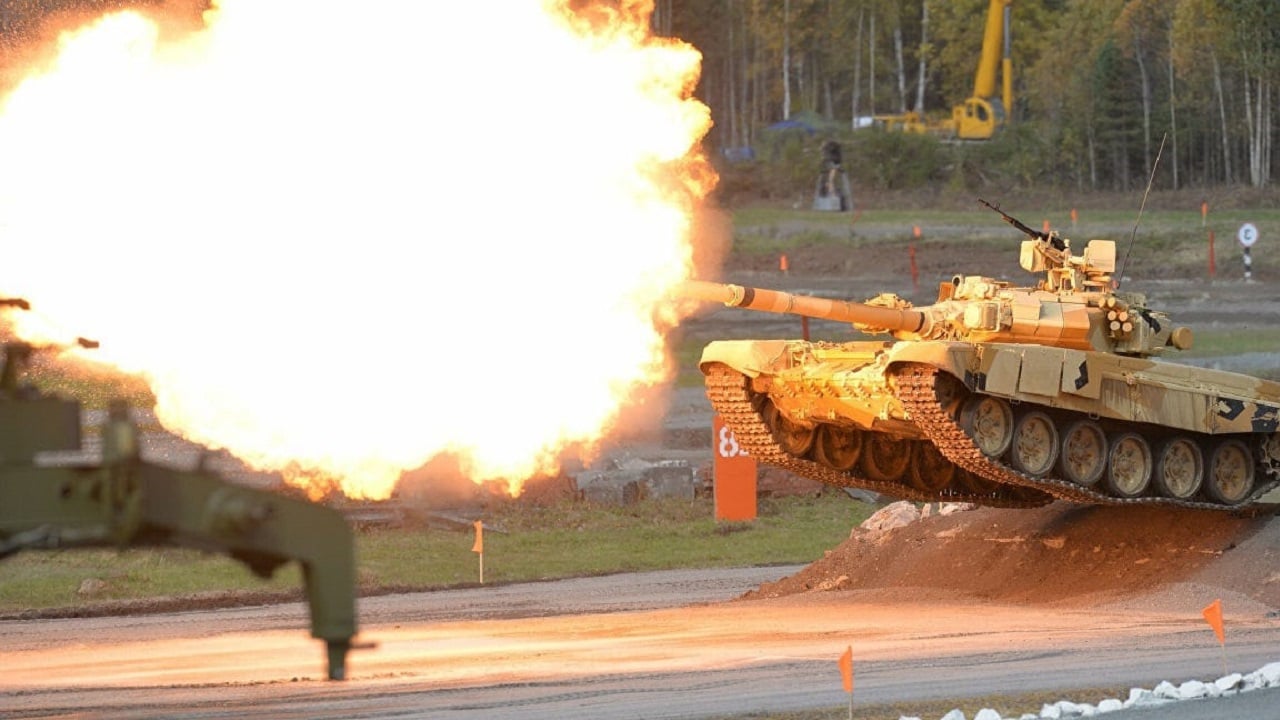A specific design flaw in Russian tank design, something the US and other Western nations have been aware of since the first Gulf War, is proving deadly for Russian forces since the invasion of Ukraine began.
The UK Ministry of Defense, which has produced very accurate intelligence since the start of the war, estimates that the Russians have lost nearly 600 tanks to Ukrainian forces. The Ukrainians claim to have destroyed or captured nearly 800 tanks and more than 2,300 armored vehicles.
And the design flaw of Russian armored vehicles is causing a “jack-in-the-box” type of scenario where the turrets blow off after a tank suffers even an indirect hit, killing the crew. Photos and videos from Ukraine are chocked full of images of burnt-out Russian vehicles with their turrets blown off littering the landscape.
Sam Bendett, who works as an adviser with the Russia Studies Program at CNA said to CNN that “Any successful hit quickly ignites the ammo causing a massive explosion, and the turret is literally blown off.”
It is an issue that also affects the Russian armored fighting vehicles such as the BMD-4. In fact, Many defense officials and analysts say that Moscow should have seen this issue coming decades ago.
Why Are Russian Tanks “Blowing Their Top”?
The flaw in Russia’s armor comes from the way they designed the internal workings of the turret and where the ammunition is stored. Indeed, back in 1991, the US-led coalition was having similar success destroying Russian-built Iraqi T-72s in the desert.
Western tanks carry their ammunition in a sealed compartment with additional ballistic protection, where the loader opens and closes a sealed door where the ammunition is stored. He then transfers the tank round into the main gun for firing. That loader is the fourth member of the crew, and if the turret were to be hit, there would only be one round inside of the turret which is inside of the gun.
Russian tanks however have an autoloader cutting the crew down to three. But the ammunition in Russian tank design is stored in a carousel that sits at the base of the turret. While the design gives the tank a lower profile, making it harder to hit, it also means that up to 40 rounds of ammunition for the main gun are stored inside of the turret. Any hit, even an indirect one will cause the ammunition to explode.
The results have been deadly. When the turrets and ammunition explode, the turret can be launched as high as a two-story building. One Russian tank exploded in Mariupol and the turret landed on the roof of a five-story apartment building.
The flaws aren’t limited to the older T-72 tanks, the newer T-80 and T-90 series of tanks have a similar autoloading system where the ammunition is stored inside of the turret. While the armor surrounding the tanks has been improved, this flaw still exists and Western analysts point to the Russian military refusing to learn from the hard lessons of the Gulf War.
Nicholas Drummond, a former British Army officer and now a defense analyst said to CNN that the Russian tank crews are basically “sitting ducks” if they are hit by an anti-tank missile.
“If you don’t get out within the first second, you’re toast,” he said.
“Western militaries all learned from the Gulf War, and from seeing tanks killed during that time, that you have to compartmentalize the ammunition,” Drummond added stating the Russian armored vehicles were “mobile coffins”.
Steve Balestrieri is a 1945 National Security Columnist. He has served as a US Army Special Forces NCO and Warrant Officer before injuries forced his early separation. In addition to writing for 19fortyfive.com, he has covered the NFL for PatsFans.com for more than 10 years and his work was regularly featured in the Millbury-Sutton Chronicle and Grafton News newspapers in Massachusetts.

